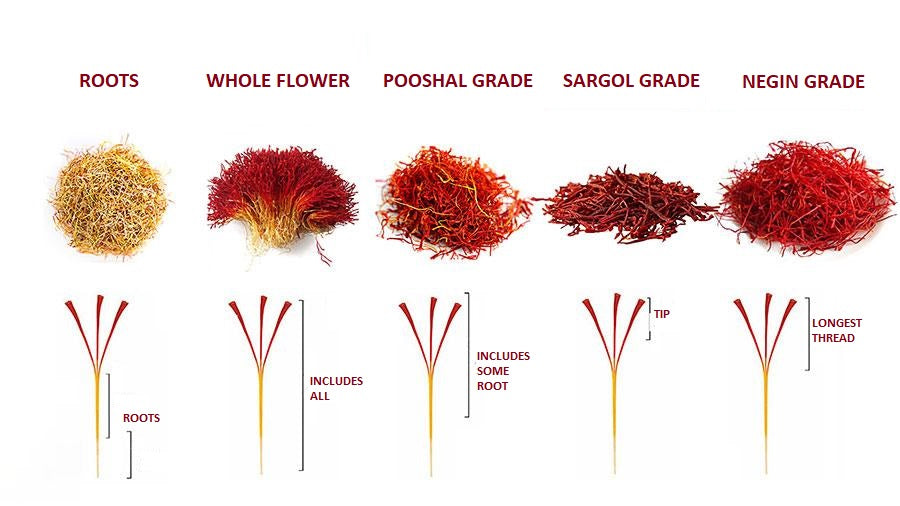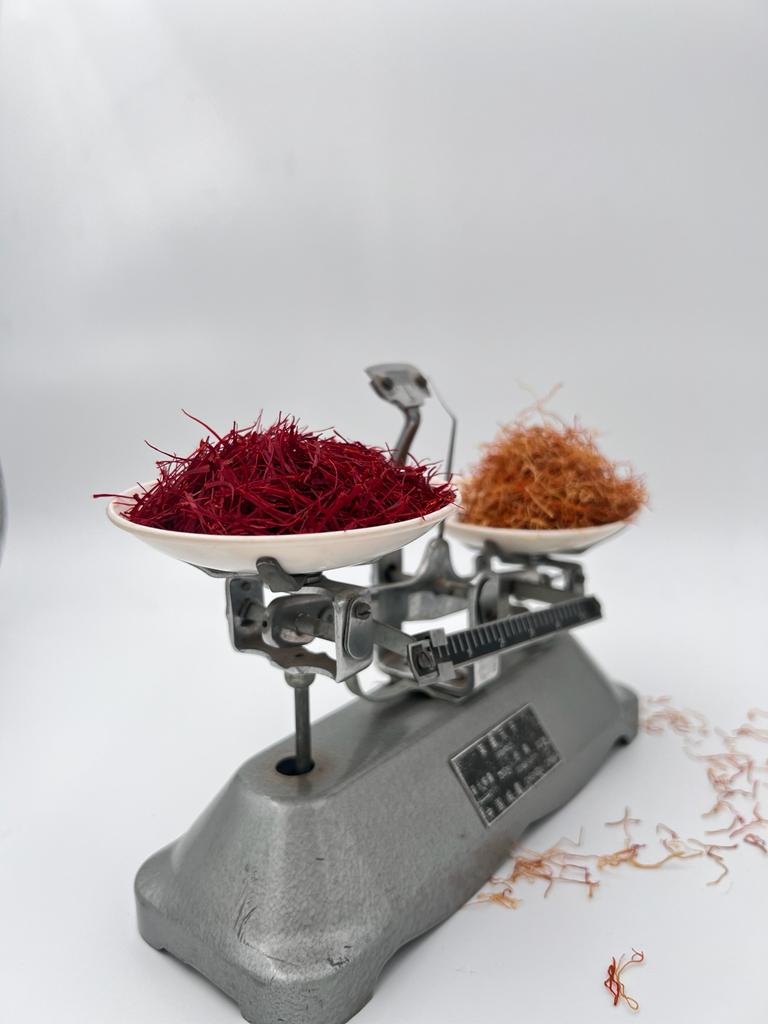
Unlocking the Essence: Know Your Saffron
Here's a breakdown of different grades of saffron, from the highest quality to the parts closer to the flower's base:
Negin Saffron: Negin is considered the highest grade and is characterized by its long, thick threads with no yellow or orange styles (the parts of the saffron flower that are not used). These threads are typically dark red with a strong aroma and flavor, making them highly prized in culinary applications.
Sargol Saffron: Sargol consists of only the red stigma tips of the saffron threads, usually with the entire style removed. This grade is slightly lower in quality compared to Negin but is still considered high-grade saffron. Sargol saffron is known for its vibrant color, intense flavor, and aromatic qualities, making it suitable for various culinary uses.
Pushal Saffron: Pushal contains both the red stigma tips (similar to Sargol) and a portion of the yellow or orange style attached. While it is of good quality, Pushal saffron is considered slightly lower in quality compared to Negin and Sargol grades. This grade offers a balance of flavor and aroma, making it suitable for both culinary and medicinal purposes.
Bunch Saffron: Bunch consists of the entire saffron threads, including both the red stigma tips and the yellow or orange style. It is the lowest grade of saffron and is typically less expensive than Negin, Sargol, and Pushal grades. Bunch saffron may have less intense color, flavor, and aroma compared to higher grades, but it is still used in various culinary applications. Regarding the roots of the saffron plant, they are
not typically included in commercial saffron products. The saffron threads, which are the stigma tips of the Crocus sativus flower, are what hold the valuable flavor, color, and aroma compounds sought after in saffron.

Exploring Saffron's Roots: The Significance of Origin
Exploring Saffron's Roots: The Significance of
Origin
Determining the best origin for
saffron involves several factors, including climate, soil conditions, cultivation techniques, and traditions.
Climate: Saffron needs a Mediterranean climate with hot, dry summers and cool, wet winters. It requires full sun and distinct seasonal changes to thrive.
Soil Conditions: The ideal soil for saffron is well-drained, fertile, and calcareous, with a pH between 6 to 8. Proper drainage is crucial to prevent corm rot.
Cultivation Techniques:
- Planting: Saffron corms are planted 10-15 cm deep and 10-20 cm apart.
- Maintenance: Regular weeding and controlled watering are essential, avoiding waterlogging.
- Harvesting: Flowers are handpicked early in the morning, and the stigmas are delicately removed and dried.
- Post-harvest: Drying should be quick to preserve quality, and the final product must be stored away from light in airtight containers.
Each factor influences the quality, color, taste, and aroma of the saffron.